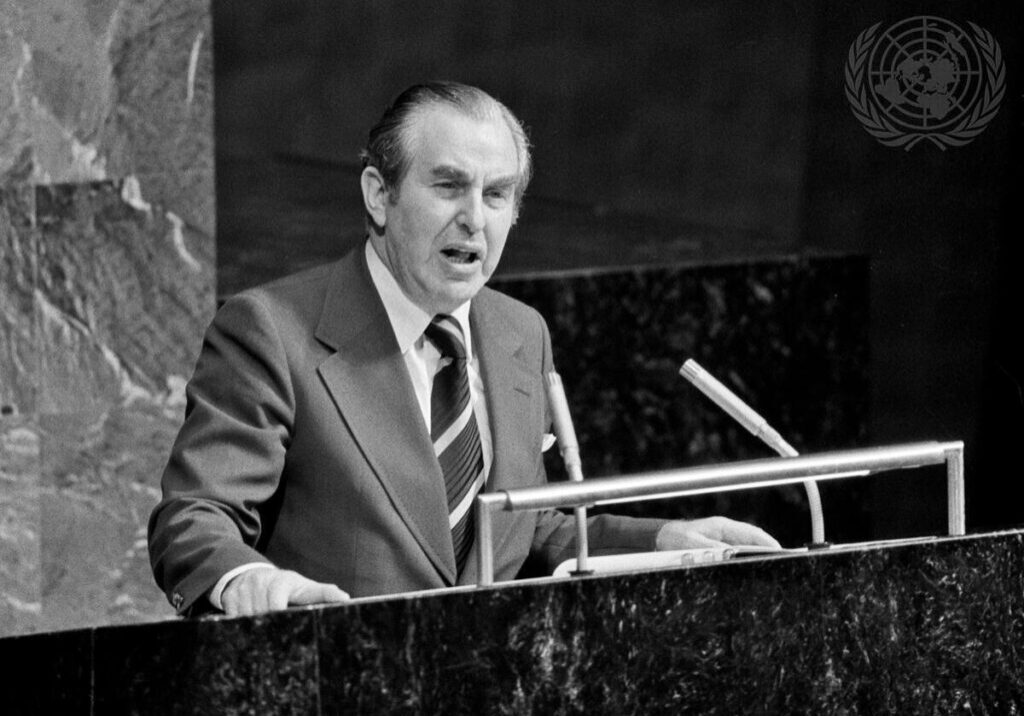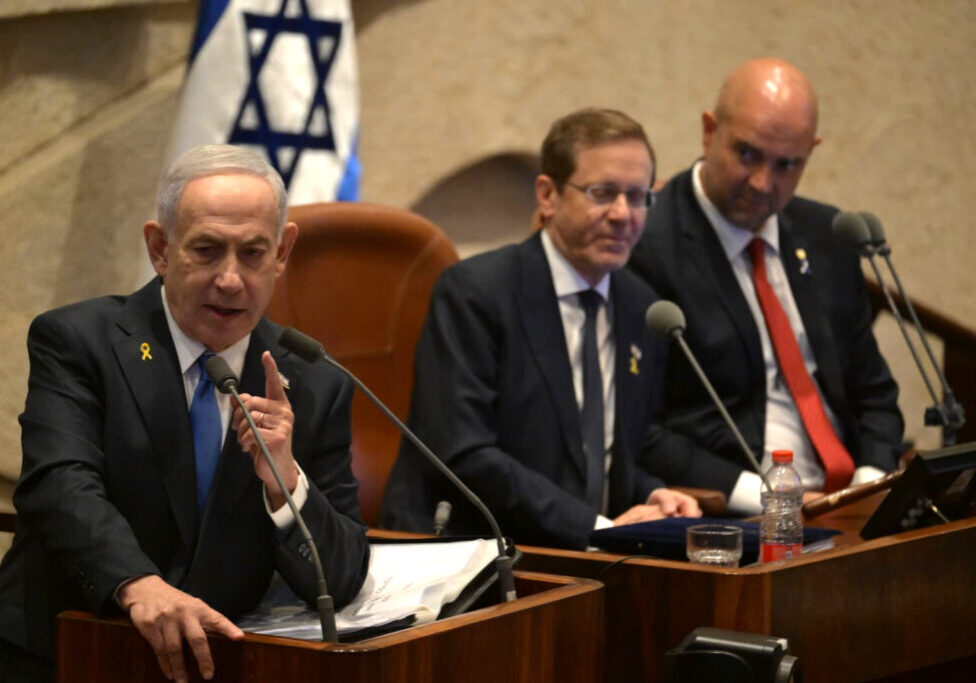Australia/Israel Review
90 years of Al-Aqsa incitement
Nov 4, 2015 | Petra Marquardt-Bigman

Petra Marquardt-Bigman
You may think, that almost 90 years ago, rumours of threats to Al-Aqsa and the Dome of the Rock due to evil “Zionist” plots to rebuild the Jewish Temple there would have been dismissed as ridiculous. After all, the Zionists of the 1920s were mostly secular, lacking both the motivation and the means, not to mention the power, to pursue such a project. But facts mattered as little back then as they matter now.
Haj Amin al Husseini, the Mufti of Jerusalem – who later gained notoriety as a Nazi collaborator and entered the history books as “Hitler’s Mufti” – decided in the 1920s that it would be a good idea to renovate what Arab Muslims call the “Haram al-Sharif,” i.e. the “Noble Sanctuary” known to Jews as the Temple Mount. Curiously, the site that nowadays can’t be mentioned without adding that it is Islam’s “third holiest” had been neglected under Muslim rule and really needed renovation after a period when Jerusalem was treated like a remote village on the outskirts of the Ottoman Empire.
Whatever else Husseini was, he clearly was a wily political operator: by the time he turned 30, he had managed to get himself appointed Grand Mufti of Jerusalem and had embarked on an ambitious renovation project that would allow him to enhance his personal prestige and power as a leader who knew how to whip up religious passions for political purposes. Husseini ensured that by the end of the 1920s, as one historian noted, “the mosques on the Temple Mount became a symbol of the struggle against Zionism. This was a tangible symbol, clear and understood to all, which replaced abstract national slogans of self-definition. Under this approach, the problem of the Land of Israel began to exceed the narrow borders of the land and became a pan-Arab and pan-Islamic problem.”
One depressing illustration of Husseini’s lasting legacy is the similarity between today’s news about the violence perpetrated by Palestinians eager to “defend” Al-Aqsa with the news Husseini initiated almost 90 years ago.
Consider this striking report mentioning the use of falsified photos from the autobiography of the Dutch-Canadian-American journalist Pierre van Paassen. His reference to the “Omar mosque” is (as contemporary usage shows) meant to refer to the Dome of the Rock:
“Falsified photographs showing the Omar mosque [Dome of the Rock] of Jerusalem in ruins, with an inscription that the edifice had been bombed by the Zionists, were handed out to the Arabs of Hebron as they were leaving their place of worship on Friday evening, August the twenty-third. A Jew passing by on his way to the synagogue was stabbed to death.”
The screenshot below from the Facebook page of the “Friends of Al Aqsa” illustrates the 2015 version of the Mufti’s method, which relies on images taken during Muslim rioting in or near the Al-Aqsa Mosque; cartoons depicting Israel as undermining the foundations of the mosque and the Dome of the Rock are also popular means to incite “anti-Zionist” passions.

Van Paassen then goes on to provide an account of the 1929 pogrom against the Jews of Hebron (which in three days killed 67 Jews and destroyed the ancient Jewish community’s synagogue and the majority of their homes) and to describe the horrifying scenes he witnessed in the wake of the slaughter. Again, the frightening bloodlust and brutality that produced the scenes he describes has eerie parallels to today. Popular “pro-Palestinian” social media accounts have posted graphic instructions on how to murder Israeli Jews; gruesome images of bleeding stabbing victims have been used widely to encourage more attacks, and much-“liked” cartoons celebrating “successful” attacks depict pools of blood.

Like in the days of Husseini, the current violence reflects seething hatred and “hysterical intolerance” fed by fabrications. As David Horovitz rightly noted in his Oct. 11 Times of Israel op-ed on the intolerance behind the ongoing “stabbing war,” the enormous goodwill Israel showed in 1967, when it left the administration of the Muslim holy places on the Temple Mount in the hands of the Waqf, was obviously not enough to convince Muslims that the Jewish state presents no threat to the site’s Islamic shrines.
If this didn’t diminish the power of Husseini’s vicious libel, what else could?
Perhaps it is time to give up on efforts to appease Muslim rage about imaginary threats to Al-Aqsa. Maybe we could try naming and shaming those who make sure that Husseini’s libel remains as powerful and destructive today as it was when he concocted it.
One could start with naming the Organisation of Islamic Cooperation (OIC) – though it admittedly seems doubtful that an organisation that is actually founded on a baseless accusation of Israeli wrongdoing at Al-Aqsa could be shamed. The OIC was established in 1969/70 after the guards employed by the Islamic Waqf failed to prevent a mentally ill Australian Christian tourist from entering the mosque to set a fire there. There is no hint of the negligence of the Waqf guards at the OIC website; instead, it is implied that the “criminal arson of Al-Aqsa Mosque” happened because Jerusalem is “occupied.”
Moreover, the libel that the Australian was a “Jewish terrorist” is regularly repeated in Palestinian media; most recently it was featured in TV programs and media commentaries marking the anniversary of the arson towards the end of August.
Similarly, Al Jazeera recently featured a contemptible screed on “Why Israel wants a religious war over Al-Aqsa” which implied that the 1969 arson happened because “Jews wanted to take the Noble Sanctuary.”
Husseini came up with the baseless accusations of “Zionist” plots to harm the Muslim shrines on the Temple Mount in order to strengthen his own position as a religious and national leader and to win the support of the Arab Muslim world. His incitement also served as an important tool to bolster a sense of Arab Muslim solidarity – just as today’s “Al-Aqsa in danger” libel does.
There is obviously very little Israel can do about the unfortunate fact that Arab Muslims continue to feel the need to prop up their sense of unity and identity by imagining all sorts of “Zionist” threats. Indeed, the Al-Aqsa libel should perhaps also be seen in the context of all the other conspiracy theories that are so popular in the Arab world when it comes to explaining failures and misfortunes as result of “Zionist” scheming and malice. Oh, you really didn’t know that ISIS leader Abu Bakr al-Baghdadi was trained by the Mossad and the CIA and that he is actually a Jewish actor named Simon Elliot???
But while some of the conspiracy theories can only be ridiculed, they all reflect and foster hate, directing anger and frustration towards an imaginary cause or enemy. The pernicious consequences of this make-believe should be exposed and analysed, but given the fashionable Western trend to treat everything as a “narrative,” it is hardly surprising that we have arrived at a point where the New York Times publishes an article that questioned if there was ever a Jewish Temple on the Temple Mount. The article was rightly derided as a “potent blend of ignorance and malice,” but the same could be said of the many articles that present every Jew who wants to visit Judaism’s holiest site and maybe whisper a prayer in a quiet corner as a justification for bloodcurdling threats of apocalyptic Muslim violence.
I’m neither Jewish nor religious, and I have absolutely no sympathy for the political agenda of the more prominent Israeli activists who push for greater access to the Temple Mount. But I equally dislike the idea that in the year 2015, the world politely nods along when Muslims claim a violent veto over who can visit a vast plateau measuring about 150,000 square metres (37 acres), which was considered a holy place by believers of two other faiths long before Islam was founded.
Petra Marquardt-Bigman is a German-Israeli freelance writer and researcher with a Ph.D. in contemporary history. © Times of Israel, reprinted by permission, all rights reserved.
This article is featured in this month’s Australia/Israel Review, which can be downloaded as a free App: see here for more details.
Tags: Israel






